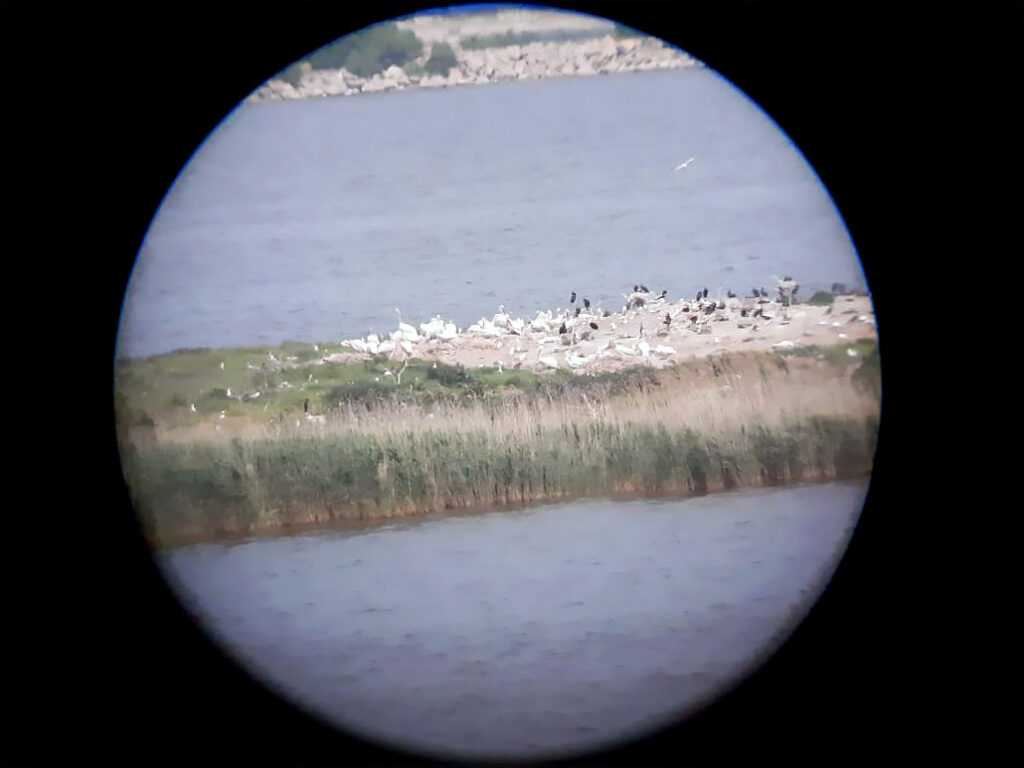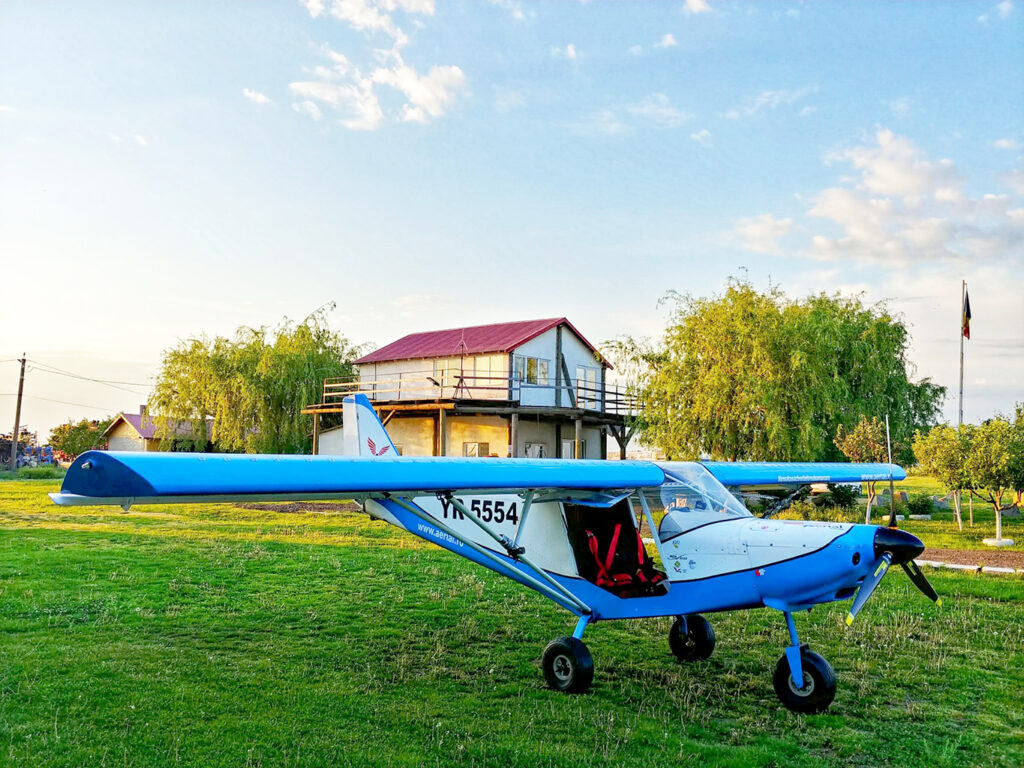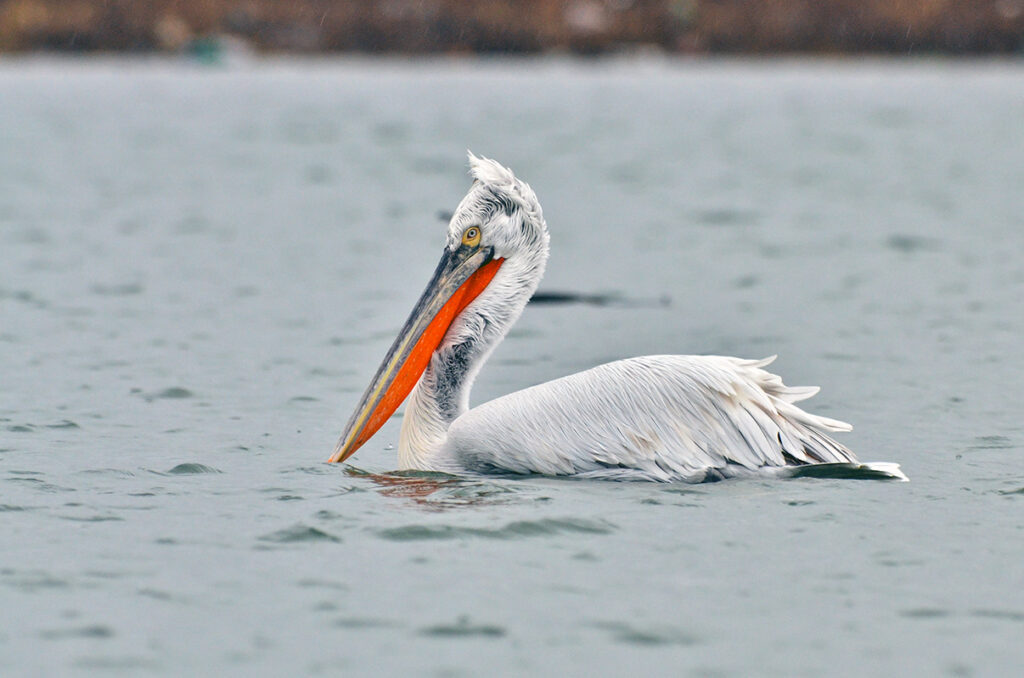Romania took part in the spring international counts of the Dalmatian pelican. In the country the action was coordinated by the Romanian Ornithological Society. The results show that the population of the Dalmatian pelican has been strongly affected by the bird flu.

The synchronous counts of the Dalmatian pelican were carried out simultaneously in the partner countries of the Pelican Way of LIFE initiative: Romania, Bulgaria and Greece. Unfortunately, in Ukraine the action could not be carried out because of the war. In addition, Turkey, Albania, North Macedonia, and Montenegro, which are also important for the distribution of the species, participated in the counts. Therefore, the international counts took place in most of the distribution range of the Dalmatian pelican in South-Eastern Europe.

“By carrying out these counts synchronously, we aim to obtain as accurate picture as possible of the flocks’ numbers, as well as of the proportion between adult and immature birds. Globally, the Dalmatian pelican is classified as “Near Threatened” on the IUCN Red List. Thus, the long-term monitoring of the species is essential to be able to observe the trends and dynamics of its population, the potential changes, but also to outline the necessary activities for the conservation and protection of the birds”, said biologist Sebastian Bugariu, the coordinator from the SOR of the activities within the “Pelican way” initiative.

The synchronous counts in Romania
In Romania, the counts were coordinated by the Romanian Ornithological Society and were carried out over the entire distribution area of the species in the Danube basin, from the river’s entrance into the country to the delta. In the Danube delta, mixed teams were formed in partnership with the Administration of the Danube Delta Biosphere Reserve (ARBDD). Here, each team included an environment inspector from the ARBDD. Most of the areas in the delta were monitored with teams on the ground, but also by overflights.

A total of 557 Dalmatian pelicans were counted in Romania, 457 of them were adults. As expected, most of the pelicans (417) were observed in the Danube Delta Biosphere Reserve, considering that most adults in the nesting period stay in the colonies and neighboring feeding areas. 16 teams with 20 participants in total participated in the action. This year all the sites of the Pelican Way of LIFE initiative and additionally other important areas for the species were covered.

Dalmatian pelican population is affected by the bird flu
The population of the Dalmatian pelican has been severely affected since the beginning of this year by avian influenza. It caused mass mortality among pelicans in several areas of the Balkans, predominantly in Greece, which lost almost half of the total population. In Romania, due to the mortality caused by bird flu during this season, the nesting population decreased by approximately 20%. Thus, here the total flock observed this year was 557 Dalmatian pelicans, that is 72 individuals less than in 2021. In the entire Balkan area a total of 3,823 Dalmatian pelicans were observed in 2022 compared to 5,468 last year, thus recording a population decrease of almost 40%.
“Dalmatian pelican species is vulnerable to epidemiological processes of this kind. Any event that causes an unexpected reduction of individuals can have a strong effect on the population as a whole. Therefore, we can say that this species is really dependent on conservation measures”, said SOR biologist Sebastian Bugariu.
Among the most important measures to protect the Dalmatian pelican population are: creating the conditions to increase the number of nesting colonies, appropriate marking of the power lines to avoid collision and the death of birds, as well as increasing awareness and involvement of stakeholders in the conservation of this emblematic species.